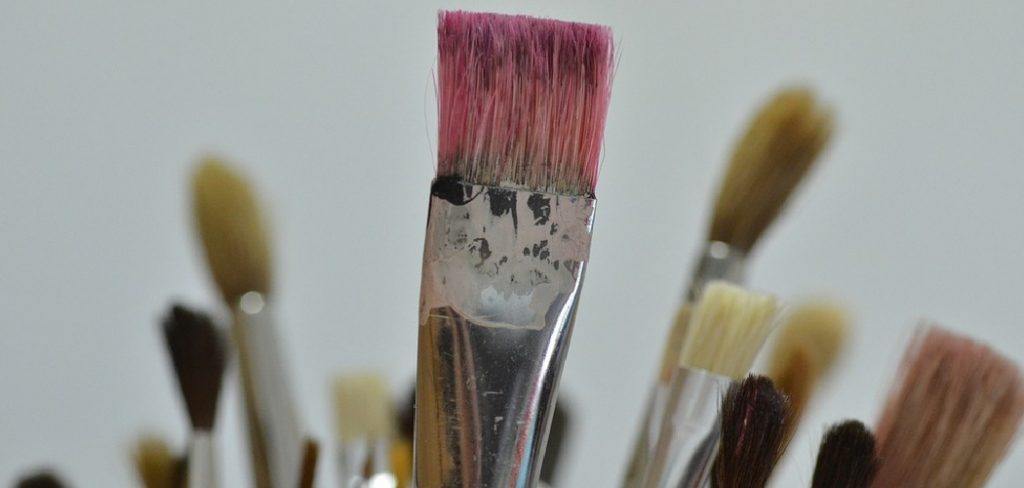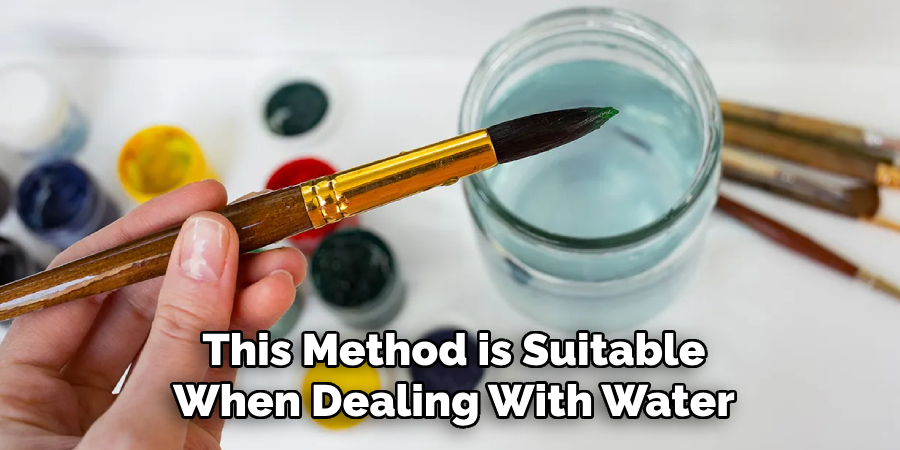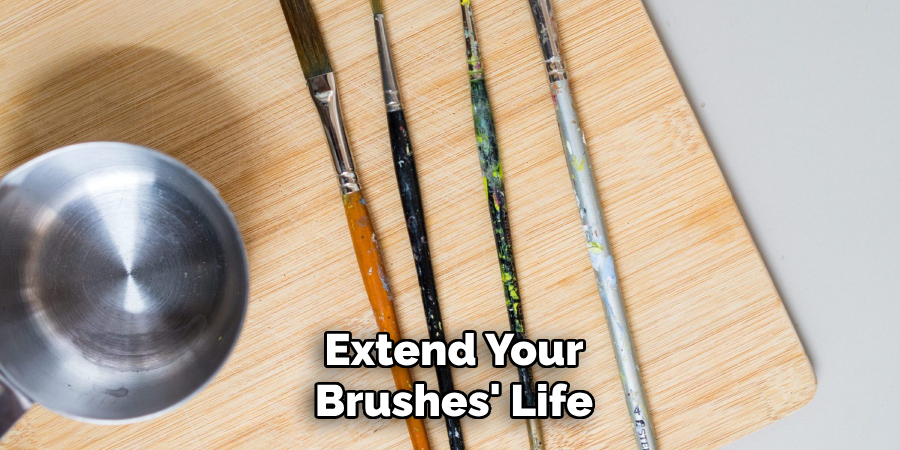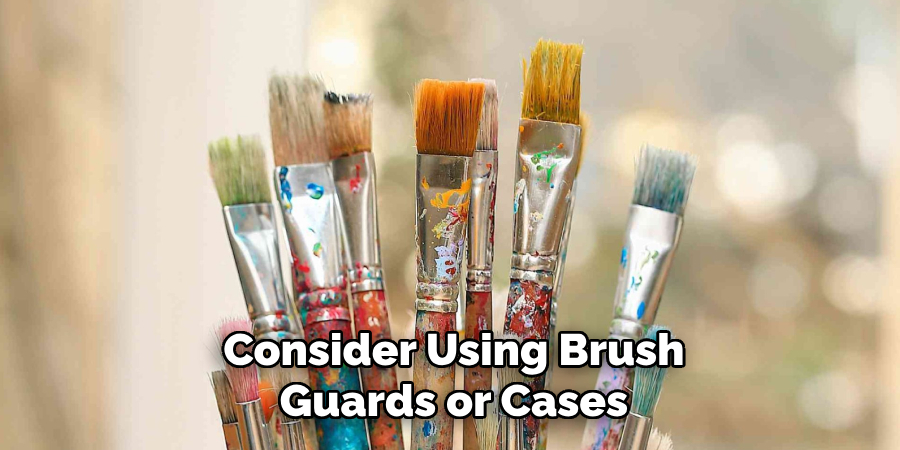Maintaining paint brushes is crucial for ensuring both their longevity and the quality of your work. Over time, factors like improper cleaning, residual dried paint, and incorrect storage can cause brush bristles to lose their original shape. Such deformations can significantly impair performance, making it difficult to achieve the precise and smooth strokes necessary for high-quality art or paint projects. By learning how to reshape paint brushes effectively, artists and painters can restore their tools to near-original condition, enhancing their effectiveness in future projects.

Regularly reshaping brushes helps maintain their integrity and ensures that the intricacies and details of your work remain sharp and accurate. Proper care and timely reshaping can help transform your painting experience, delivering better results with minimal effort.
Identifying When a Paint Brush Needs Reshaping
Knowing when a paintbrush requires reshaping is key to maintaining optimal performance in painting projects. Signs of a deformed brush are often visible, including bent, frayed, or splayed bristles that no longer align properly. These issues manifest during use, leading to performance problems such as difficulty in achieving even lines or smooth strokes, detracting from the quality of the artwork. There are several common causes of brush deformation. One significant cause is failing to clean the brush thoroughly after each use, allowing paint to dry on the bristles, which hardens them and causes them to lose their shape.
Additionally, improper storage can lead to bristles being pressed or bent out of alignment. Storing brushes with the bristles facing downwards or in a cramped space can exacerbate deformation. Being vigilant in identifying these deformations early can prevent more significant damage and ensure better results in artistic and decorative endeavors.
Cleaning the Brush Before Reshaping
Before embarking on the reshaping process, it’s essential to ensure that your paintbrush is thoroughly clean. Start by tackling any dried paint on the bristles, which can be softened and removed with a paint remover or specialized brush cleaner. These products are designed to break down stubborn paint residue that standard soap cannot. Once the dried paint is addressed, wash the brush using warm, soapy water. This method effectively cleans water-based paints, where gentle scrubbing removes every paint trace. When dealing with oil-based paints, opt for mineral spirits or paint thinner.
These solvents dissolve oil-based residues, ensuring a thorough clean. It’s crucial to rinse the brush comprehensively after using any cleaning agent to eliminate any remaining chemicals that could harm the bristles or affect future paint jobs. These steps provide a clean foundation for reshaping, ensuring optimal brush performance.
How to Reshape Paint Brushes: Methods for Reshaping Paint Brushes
To ensure your paint brushes maintain their effectiveness, the following methods can be employed to restore their original shape.
Method 1: Warm Water and Soap Method
The warm water and soap technique is simple and effective for softening and reshaping bristles. Start by soaking the brush in warm water for a few minutes, allowing the heat to relax the bristles. Then, with gentle pressure, use your fingers to realign the bristles back to their original form. This method is suitable when dealing with water-based paints, as the soap helps clean and reshape the paint.

Method 2: Boiling Water Method
The boiling water method is highly effective for persistent cases where bristles are severely misshapen. Carefully dip the brush’s tip into hot (but not boiling) water for a few seconds. The heat loosens the bristles, making them pliable. While the bristles are warm, gently reshape them with your fingers or a comb. Be cautious not to scald yourself, ensuring the brush is only briefly submerged and handled safely.
Method 3: Comb Method
Using a fine-toothed comb or a specialized brush comb is an excellent way to realign disordered bristles. With the bristles facing downwards, run the comb from the base to the tip, applying consistent pressure for smoothness and uniformity. This technique is beneficial in detangling any clumped bristles, ensuring they lay flat and evenly aligned.
Method 4: Wrapping Method
If you need a method that holds the brush’s shape during drying, try wrapping. After cleaning the brush and realigning the bristles, wrap the brush head snugly in tissue or a paper towel. Secure it with a rubber band to maintain the desired shape while it dries. This gentle pressure helps the bristles set correctly, avoiding splaying or bending.
Method 5: Using a Brush Shaper Gel
For added precision, apply a brush shaper gel after cleaning. This conditioning gel coats the bristles and holds them in place, restoring their original shape. Apply the gel evenly across the brush, working it through the bristles, then allow them to dry. Before using the brush again, ensure to rinse off the gel thoroughly. The result is a brush that keeps its form longer, improving your painting precision.

These methods provide practical solutions for reshaping your paint brushes, keeping them in top condition for your creative endeavors. With proper care and regular maintenance, you can extend your brushes’ life and enhance your artwork’s quality.
Drying and Storing Reshaped Brushes
Proper Drying Techniques:
Proper drying techniques are vital for maintaining the integrity and effectiveness of reshaped brushes. After cleaning and reshaping, it’s crucial to let the brushes dry with the bristles positioned either horizontally or downward. This method ensures that any water does not settle at the ferrule, which can cause rust or lead to the bristles becoming loose over time. One effective way to achieve this is to lay the brushes flat on a towel or use a brush hanger or clothespin to hang them, enabling gravity to remove moisture from both the ferrule and handle areas.
Avoiding Heat Sources:
It is important to steer clear of direct heat sources, such as hair dryers, for drying paint brushes. Exposing brushes to heat can damage the bristles, causing them to become brittle or deformed, ultimately affecting their performance. The natural drying process, although slower, preserves the bristle’s condition, ensuring that they remain soft and pliable for far longer. The patience required in air-drying is worthwhile for extending the life span of your brushes.
Optimal Storage:
Proper storage techniques are pivotal in maintaining the shape and form of your brushes. To prevent distortion, it is recommended to store brushes vertically with the bristles up or hang them using a brush holder. This avoids unnecessary pressure on the bristles that can occur if left against a surface or under other objects. Vertical and hanging storage allows the brushes to maintain their shape naturally while reducing the risk of damage or crimping.
Protection Tips:
Consider using brush guards or cases to enhance the longevity of your brushes during storage, especially for long-term periods. Brush guards help preserve the bristles’ form by providing a snug encapsulating cover. Alternatively, storing brushes in cases can protect them from dust, physical damage, or accidental bending. These simple yet effective tools offer an extra layer of protection, ensuring your brushes are always in optimal condition for your next creative project.

Maintaining Brush Shape After Reshaping
To maintain the shape of your brushes after reshaping, it’s essential to adopt diligent cleaning practices after every use. Begin by removing excess paint with a cloth or paper towel, then rinse under lukewarm water. Use mild soap to ensure total paint removal for water-based paints, while oil-based paints require specific solvents like mineral spirits. Following each cleaning solution with a warm water rinse is crucial to remove any residue that could degrade the bristles.
Proper storage is paramount in preserving the brush’s form. Avoid placing brushes in containers that force the bristles to bend or splay. Instead, opt for vertical storage with the bristles up or utilize a brush holder that prevents any bending pressure. Regular inspections should be conducted to identify signs of wear or damage. Look for any frayed bristles or loosened ferrules and address these issues promptly to extend the brush’s lifespan. Your brushes will remain in prime condition through consistent care and maintenance, ready to deliver precise and quality results in every artistic endeavor.

Common Mistakes to Avoid When Reshaping Brushes
When reshaping brushes, handling them with care is essential to maintain longevity. Using excessive force, such as pulling or pressing too hard on the bristles, can cause permanent damage, leading to fraying and loss of their intended shape. Instead, apply gentle pressure and be patient during the reshaping process. Skipping thorough cleaning before reshaping is another common mistake. Residual paint can harden and alter the bristle structure, causing recurring shape issues.
Always ensure brushes are completely clean before attempting any reshaping techniques. Additionally, the drying position is crucial—drying brushes with bristles facing upwards can lead to water seeping into the ferrule, weakening the glue and causing bristles to loosen over time. Instead, dry brushes horizontally or with the bristles facing downward to preserve their structural integrity and extend their lifespan.
Conclusion
In summary, learning how to reshape paint brushes effectively involves a few key methods that are crucial for maintaining their condition and extending their lifespan. From using warm water and gentle cleaning agents to employing brush shaper gels, each technique helps restore brushes to their optimal shape. Proper drying and storage, such as keeping bristles orientated correctly and storing them in a brush holder, are essential practices to prevent damage.
Above all, regular cleaning after each use ensures that the paint does not harden and alter the brush’s structure. By practicing these good habits, artists can preserve their paintbrushes, ensuring they remain reliable tools for future creative endeavors. By integrating these methods into your routine, you can achieve longevity in your brushes, keeping them ready for any artistic project that lies ahead.
Toby Rede is a professional potter focused on creating functional and artistic ceramics. His work blends natural textures with modern forms, often inspired by sustainable gardening and outdoor environments. Toby’s pottery emphasizes both utility and beauty, reflecting his philosophy of intentional craftsmanship. On the blog, he shares insights on integrating handmade objects into everyday life.
Education
- Associate Degree in Ceramic Technology, Alfred University
Professional Focus
- Pottery creation with a focus on functionality and artistic expression
- Techniques exploring texture, glazing, and sustainable materials
Professional Accomplishments
- Work featured in regional art shows and garden exhibitions
- Collaborations with local craft fairs and home decor shops

